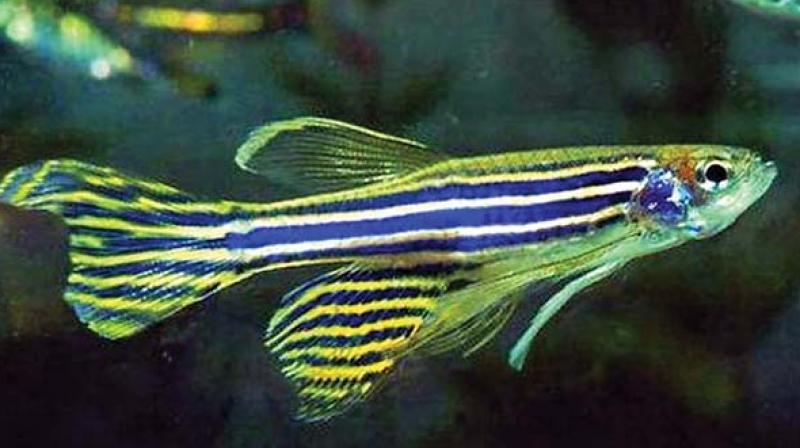Visakhapatnam: Zebrafish replaces rodents in laboratories

Visakhapatnam: Gone are the days when rodents, particularly mice and rats, were used for scientific experiments. The zebrafish, which is abundant in Andhra Pradesh and Telangana, is the new big thing in medical research with about 70 per cent of its genes being identical to those of the human race. The tiny fish has become a prime source for researchers across the world to study human genes and their response to diseases. Researchers, including those from India, have succeeded at laboratory level in studying various diseases and treatments through this model, including muscular dystrophy, epilepsy, cancers, narcolepsy, embryo development, and heart regeneration.
A professor of zoology and principal of the College of Science & Technology, Andhra University, Prof D. E. Babu, said: “The zebrafish comes in handy with its multitude of benefits like shorter gestation period, capability to produce a huge number of offspring and the transparent embryos allowing real-time imaging of pathogenesis. Through transgenesis (introducing an exogenous gene into a living organism, so that the organism will exhibit a new property and transmit that property to its offspring), researchers can study many generations of a zebrafish within a shorter period.”
Researchers at the Tata Institute of Fundamental Research (TIFR) studied the zebrafish model in microvillus inclusion disease recently. Researchers at the CSIR-Institute of Genomics and Integrative Biology, Delhi, are studying the CHARGE syndrome in these tiny fish.
Karthik Maddula, faculty in Department of Pharmaco-logy at the Bharat Institute of Technology (DPBIT), Hyderabad, published a research paper on the zebrafish in Research & Reviews: Journal of Pharmacology and Toxicological Studies.
He said, “Zebrafish, whose embryos are easily manipulable because of their size and the ease of gene manipulation make zebrafish embryos a felicitous vertebrate system to examine.”

